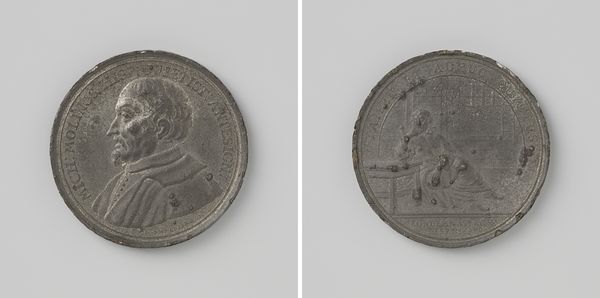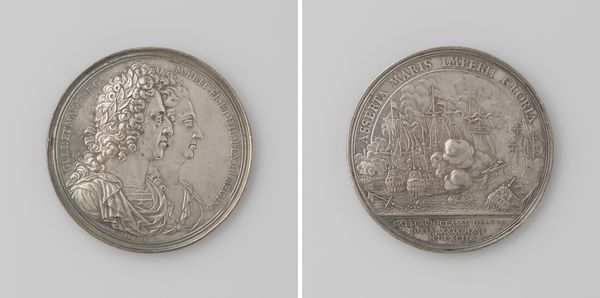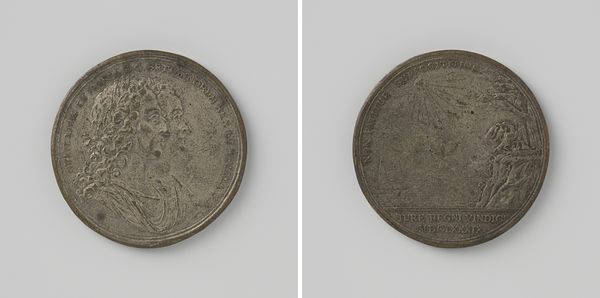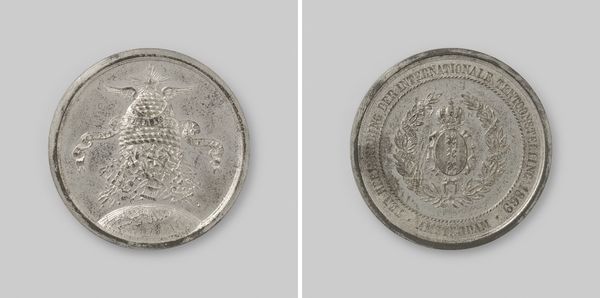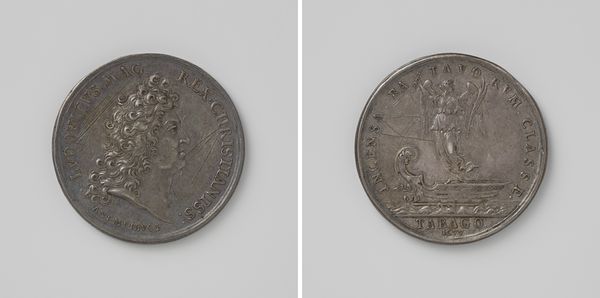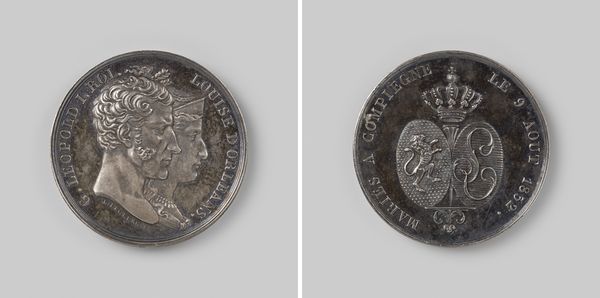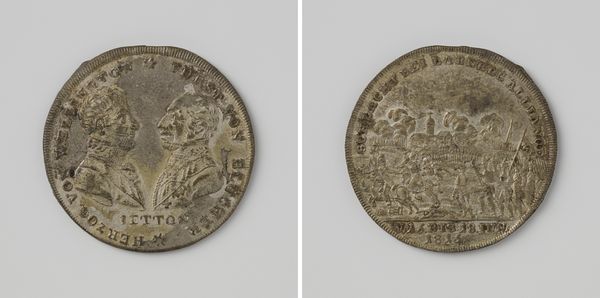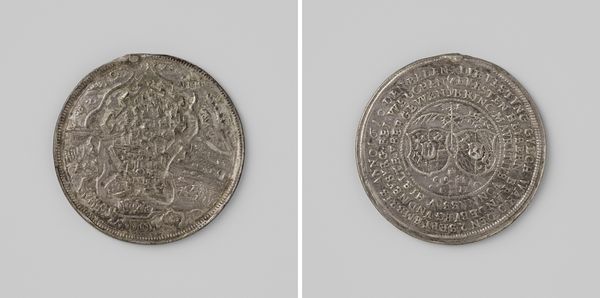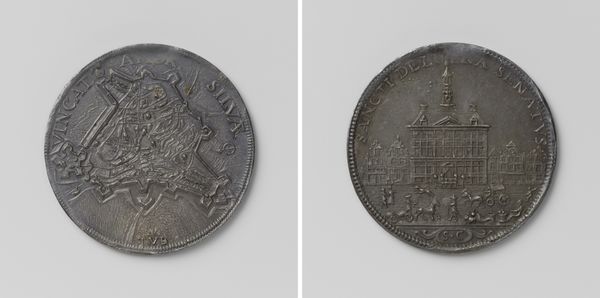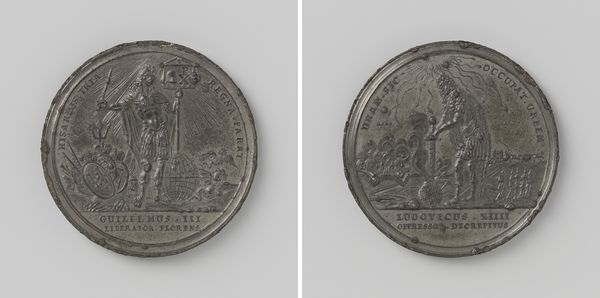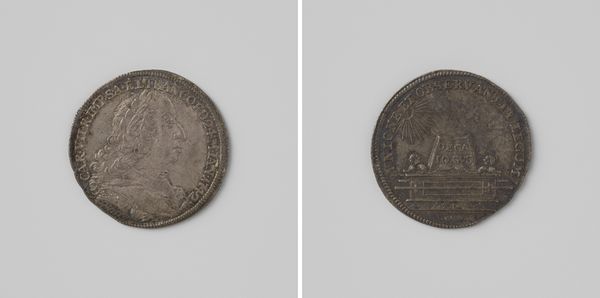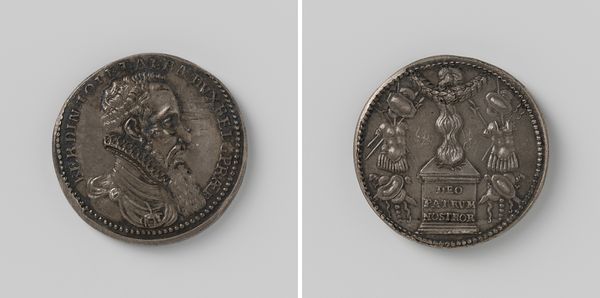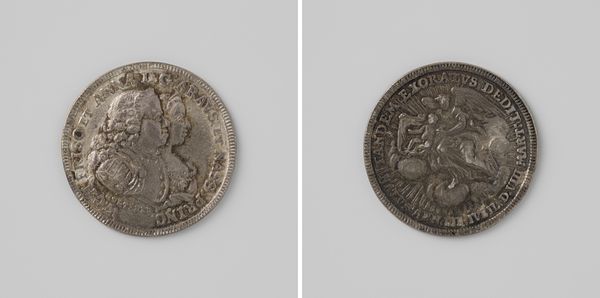
metal, relief, engraving
#
portrait
#
neoclacissism
#
dutch-golden-age
#
metal
#
relief
#
cityscape
#
history-painting
#
engraving
Dimensions: diameter 4.6 cm, weight 38.01 gr
Copyright: Rijks Museum: Open Domain
Curator: This metal relief from 1787, known as "Karel Willem Ferdinand, Duke of Brunswick and the Capitulation of Amsterdam," offers a fascinating glimpse into Dutch history through a neoclassical lens. What's your immediate take? Editor: Bleak. The monotone of the metal flattens the figures and architecture, diminishing any sense of grandeur one might expect from such a scene. Is it meant to evoke a feeling of somber reflection? Curator: It speaks to a very specific moment in Dutch history, namely the Prussian intervention that restored the power of the Stadtholder, William V, against the Patriot movement. This relief essentially celebrates the Duke of Brunswick’s role in that power shift and what it represented for gender, class, and political life in Amsterdam. The cityscape on the coin can't be separated from these sociopolitical realities. Editor: True, but ignoring its form to reduce this piece solely to its context would be limiting. Let's appreciate its intricate lines; see how each minute detail adds depth, albeit within a restricted palette. The crispness with which the buildings are etched shows great command. Curator: Yet, consider who it was commissioned by and for whom. Its visual language wasn't innocent; the medium—metal—and the technique—engraving—served to commemorate power structures and, in turn, reinforce gendered roles and the established hierarchies within Dutch society. This makes me reflect on art’s complex relationship with power and privilege. Editor: Well, I see more than just propaganda here. Regardless of the motivation of the commissioning party, there’s inherent aesthetic merit to this kind of neoclassical style: The balance in composition, the precision, and how light could be used to shape form. I find great potential to consider these forms through semiotics and the reading of codes. Curator: Semiotics divorced from historical context risks obscuring its original function as an instrument of ideological reinforcement. By examining it from a contemporary lens, we might unravel the hidden complexities of representation and gender, which continue to be relevant. Editor: And by appreciating it formalistically, we're able to truly value its unique attributes and visual voice—it gives us a common lexicon and appreciation that bridges time. Curator: Ultimately, art endures as a site of both historical context and creative interpretation; where meaning emerges through dialogue.
Comments
No comments
Be the first to comment and join the conversation on the ultimate creative platform.
